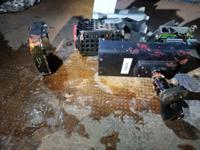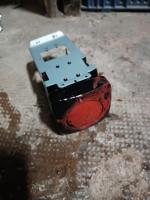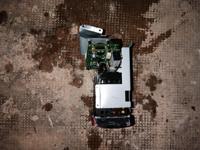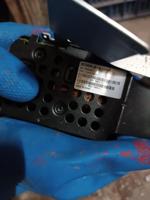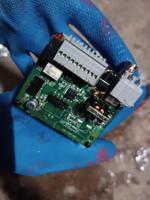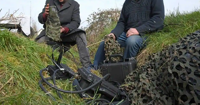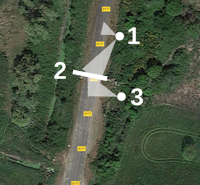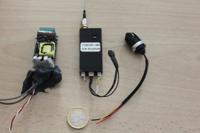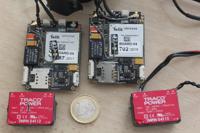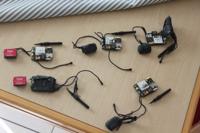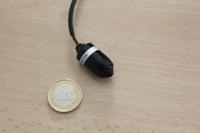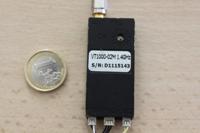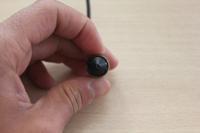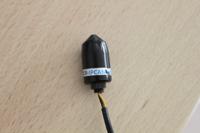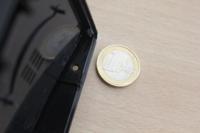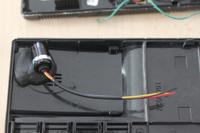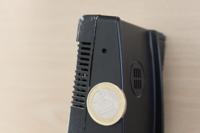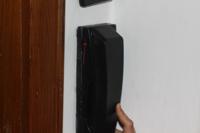A camera was found in a car parked near the venue of an event. It was located in a box, behind a tinted panel. It had a good view on the venue's entrance. A flashlight pointed at the box revealed the camera, despite the tinted panel.
A camera was found in front of a house. It was located inside a black box, on the roof of a restaurant located in front of the house.
A camera was found in a minibus parked near the venue of an event. It was located in the back of the vehicle, on a shelf, in a plastic box, one side of which had been replaced by tinted glass. The minibus was disguised as a craftsman's vehicle, with work equipment clearly visible, tools and empty coffee cups on the passenger seat.
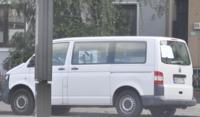
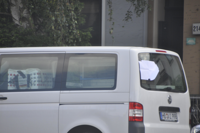
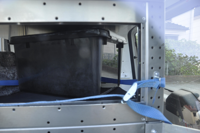
Two cameras were found in a car parked on a street. They were located on the package shelf, in a basket and a bag respectively. A set of cables, hidden under towels, led to the trunk of the vehicle. The camera lenses were aimed at a building entrance and a sidewalk.
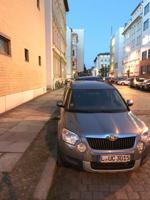
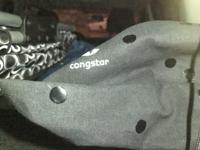


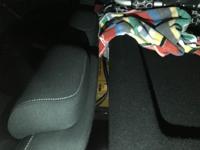
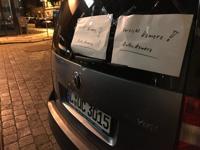
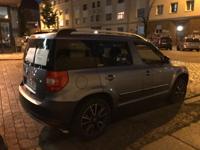
Three surveillance cameras were found in a building, pointed towards the entrance of a wagenplatz (a leftist political community where people live in trailers). They were located in a locked room, on the sixth floor of a building close to the wagenplatz — the building in question was vacant except for its first floor. One of the cameras was a “Sony ISO 409600 Extreme Sensitivity 4K” with a high-grade “Sony SEL 600mm F4 GM OSS E-mount” telephoto lens. The two other cameras were “Panasonic WV-S6131” IP cameras.
All three cameras were connected to a “G-ST 500+/8R Gscope055” video management device marketed by the German company Geutebrück, which was equipped with a SIM card and a 2 TB SSD. The SSD contained video files dated from November and December 2022 in the GBF (Geutebrück Backup File) format, which can only be opened with the company's proprietary software. There were three files per day, each of which could be assigned to a camera. The file sizes indicated long-term and continuous video surveillance.
Another drive located in the room (a “Samsung Portable SSD T5”) contained additional GBF video files dated from September and October 2022, as well as two images taken by the IP cameras dated from August 2022 and showing the entrance of the wagenplatz, people and vehicles.
The whole installation was powered from a wall socket using an “Antrax SwitchBox-GSM” device which contained another SIM card, seemingly allowing the installation to be powered on and off through the mobile phone network. The IP cameras were powered by the video management device through Ethernet (using a “Delock Gigabit PoE+ Splitter” device).
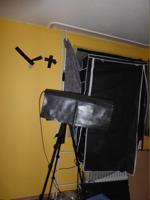
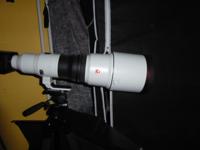

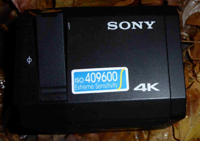
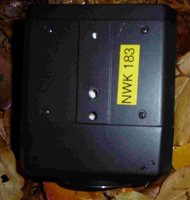

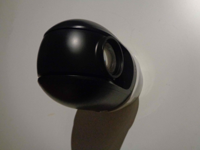
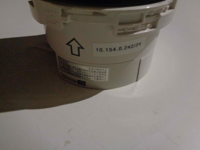
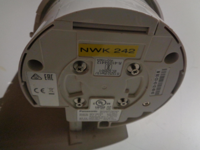
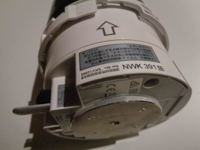
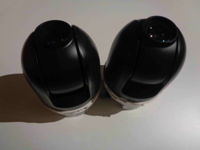
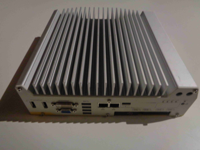
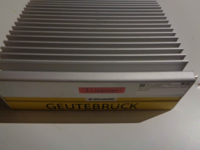
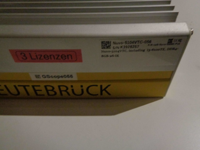
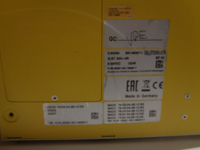
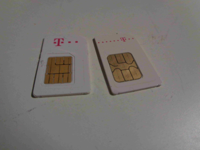
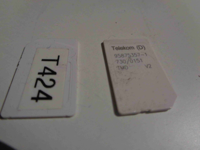
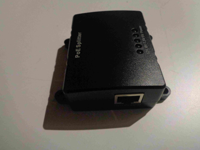
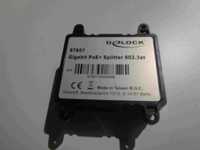
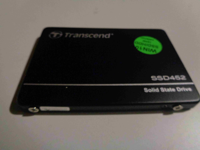
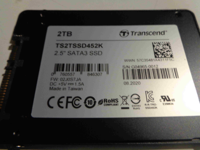
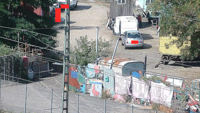
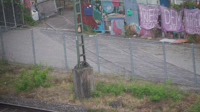
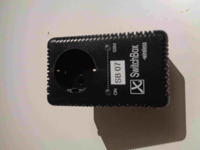
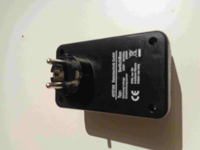
A camera and a microphone were found on a bike. They were hidden under the bike seat, inside a container resembling a tool kit. The device consisted of a main unit connected to a camera, a microphone, a battery (Li-ion, 3.7 V, 60 Wh, 16.0 Ah), a modem (EM7565 Sierra Wireless), a SIM card, a GSM antenna and a 4G antenna (Antenova SR4L002). The camera pointed outwards through a very small hole and was directed at the entrance of the building under surveillance — it was impossible to identify it with the naked eye. A few minutes after the device was spotted and removed, the suspected spies came to retrieve the bike.
Two cameras were found in the streets. Each was in a box attached to an electric pole. They were able to film the entrances and surroundings of the buildings under surveillance. They were present — possibly on and off — since 2019. After the discovery of the first camera, the second one was removed, presumably by the State intelligence services.
A camera was found outside, pointed towards a house. It was barely emerging from the ground and was covered with brambles and grass. It was connected to a “Pepwave” router and to two cases containing lithium batteries labeled “Accuwatt”, hidden in a ditch, under a tarp and a camouflage net.
The batteries were marketed by the company Accuwatt, specialized in batteries for law enforcement and the military.
Three surveillance cameras were found overlooking a restaurant. They were buried in a hill at a certain distance from the restaurant. They included a transmitter and a battery pack.
Four cameras were found outside a large area where people lived. They were hidden near an access gate to the area, camouflaged in a fake tree log and fake stones. They filmed continuously and were connected, via buried cables, to large batteries and concealed modems. The mention “Allwan” was visible on a label on a camera. The cameras were found on August 31, and appeared to have been installed right before a event organized in the area on August 29 and 30.
The mention “Allwan”, visible on a label on a camera, suggests that the cameras were supplied by the French company Allwan Security.
A surveillance device capable of recording images and sound was found during a gathering in front of a jail. It was located behind a few stones, in a wall along a path, wrapped in a black garbage bag. It was not the first time that a gathering took place there. The device contained a battery, a SD card, a microphone, and a camera hidden behind a rock in which a hole had been made. It seemed that the device couldn't send the recorded data, which was stored on the SD card. An analysis of the content of the SD card showed that the device was activated on June 3 and was installed on the afternoon of June 7, the day before the gathering.
The pictures of the device show that the device included a digital video recorder of model “DK-PV500E”, marketed by the Italian company DSE (Digital Surveillance Equipment). This suggests that the device was supplied by the Italian company DSE.
Six microphones and a camera were found in a house. The microphones were located in electrical outlets and switch cases, one above the intercom in the corridor, two other in the living-room, and the three last ones in bedrooms. The camera was located inside the intercom in the corridor and connected to the microphone above it. Each microphone was equipped with a battery, and, except for the one in the corridor, with a SIM card and a memory card. The camera lens could observe through a small hole already present in the intercom structure and slightly modified to fit the device.
Three outdoor surveillance cameras were found outside, close to the venue of an event. They were located along a 250m pathway leading to the venue. Among them, two cameras of model “BOLYGUARD MG983G” were found laying in the grass and in a bush, 80 centimeters above ground and were covered by a kind of camouflage hairnet. The third camera, of model “RECONYX HYPERFIRE SM750”, was found on a tree trunk, 1m20 above ground and had a khaki color.
The contents of the SD cards revealed that:
- The cameras were installed on the day they were found, very early in the morning (between 3h30 and 4h)
- They were capable of night vision. Two of them were configured to take pictures and the third one to record video and sound.
- Their positioning allowed them to take pictures of the front and back license plates of cars driving on the pathway, and of people walking on the pathway.
- One of the cameras was useless because of leaves in its field of vision.
The cameras were marketed by the companies RECONYX and Boly.
- BOLYGUARD-MG983G-en.pdf: user manual of the "BOLYGUARD MG983G" camera (in English).
- BOLYGUARD-MG983G-fr.pdf: user manual of the "BOLYGUARD MG983G" camera (in French).
- RECONYX-HYPERFIRE-en.pdf: user manual of the "RECONYX HYPERFIRE" camera (in English).
Several surveillance devices were installed from 2015 to April 2018 in the Ecuadorian embassy in London to surveil Julian Assange, founder of the news organization Wikileaks, which had taken refuge in the embassy since 2012. During this period of time:
- The interior cameras were replaced with higher resolution cameras equipped with hidden microphones.
- Microphones were hidden inside a fire extinguisher and above the storage cabinet in the bathroom used by Assange.
- Special stickers were attached on the exterior windows of the embassy to facilitate the use of a laser microphone (able to capture audio by detecting the sound vibrations in the windows) from a building nearby.
- A device capable of transmitting in real-time the information collected by the other devices was installed.
The microphone inside the fire extinguisher was equipped with an SD card and a battery which was changed every twelve hours. The microphone in the bathroom was connected to the electrical system of the building. The devices were installed by the Spanish company Undercover Global, officially in charge of the security at the embassy. Their installation appeared to have been ordered by the CIA (Central Intelligence Agency).
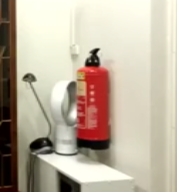

A micro-camera was found in a house. It was located in the kitchen/dining room, inside a wall, covered up by mortar, revealing only the hole for the camera's lens.
A surveillance device was found in a school located in front of an anarchist library. It was located in a storage room on the first floor, overlooking the library through a window. It looked like a cardboard folder. It was contained in a hard plastic rectangular casing of about 40x25x25 centimeters. It was loud (because of fans) and connected to the electrical network (without batteries). The casing had a hole of about 4 centimeters in diameter for the camera, with three cables coming out at the end, two of which were antennas and a third a small square sensor.
Inside the box were:
- A wireless router with two SIM cards, a GPS module, three cell inputs, and one stereo input.
- A processor.
- A cellular device with a SIM card.
- A camera with two remote-controlled zoom levels.
- And other things that could not be identified.
The device was in place since at least the second week of July 2015.
- paris-2015-09.zip: additional pictures of the devices.
Three microphones with cameras were found in the alleys around a building. The devices were pointed at the different entries of the building.
The pictures of the devices show that the cameras were marketed by the Italian company Elkron (which became a subsidiary of the Italian company Urmet in 2012). This suggests that the cameras were supplied by the italian company Elkron.
A video surveillance device was found. It was located on the second floor of a vacant house. It contained cameras mounted on tripods, which filmed the public space through windows.
A video surveillance device was found. It was located on the second floor of a vacant house. It contained a swiveling camera which was connected to a hard disk and could be controlled via an LTE mobile phone connection, and a battery to power the device. Through a window, the camera had a view of the sidewalk, several building entrances and several apartment windows. The device could not be seen from the outside as its luminous diodes had been masked off.
Two cameras were found in front of a building. They were hidden in a fake electric box of the Italian electricity supplier Enel, attached on the first floor of a building.
The logo of the Italian company Gruppo TRS, which was bought in 2012 by the Italian company Atet, is visible on the pictures of the cameras. This suggests that the cameras were supplied by the Italian company Atet.
A camera was found in a residential building close to a social center, in a small locked room on the 12th floor, overlooking the social center's main entrance through a window. It was mounted on a tripod and powered by a socket in another locked room, through a cable laid outside across the roof. The residential building was located about 260 meters from the social center.

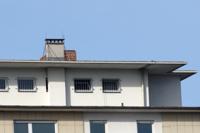
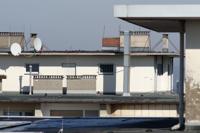



A police surveillance camera was found in a hospital, pointed towards another building.
Four microphones and a camera were found in a house. A microphone was located behind the fridge, another in the bedroom, another in a beam next to the ceiling light, another in the house entry. A small camera filmed the entry stairs. All were connected through a transformer to the house electrical network.
A camera was found in a school's air conditioner. It controlled the entrance of a house.
Several cameras were found in the attic of a public school located in front of a recently evicted squat, overlooking the squat through the skylights.
A camera was found in an apartment. The device was located in the kitchen, behind a small air vent. It consisted in a camera connected to a large battery made of 3 tubes of 4 batteries of 14.4 V. The battery was behind the sink. Between the battery and the rest of the device was what seemed to be a switch that could be manipulated remotely. The camera was connected to a small black box that served as an encoder. This encoder, of model “Micro View Lock” (marketed by Ovations Systems), was in turn connected to what may have been an antenna to transmit images on a 1.4 GHz frequency. There was no SIM card. The camera, secured with magnets, was pointed towards the kitchen table.
Microphones and cameras were found in a building. A first device was located in an electrical case that was abnormally hot. It consisted of a microphone and a micro-camera. A second device was located in an industrial outlet.
Microphones and a micro-camera were found in multiple homes. The devices were found in an amplifier, in the kitchen hood and in a cathode-ray television. They included microphones and 300 MHz transmitters with ranges of 200 to 300 meters. One of the devices could be activated by remote control (at a distance of hundreds of meters). Another device came with a micro-camera linked to a UHF band transmitter.

 English
English




